If you were here for the post I made before Christmas, you’ll remember that I’ve been hankering after a copy of these Edwardian drawers in the Metropolitan Museum.
In my last post I pledged to use Agnes Walker’s draft from 1897, but as you can see, it’s not exactly the same shape… in fact, I think I may have figured out what she means by “knickerbockers”.
They are LONG. And my drawers are SHORT. Yeah, I could just chop this pattern up, but I can do better than that.
So… alternatives? I have three. The first is the easy modern solution – let someone else do the research for you, and use a company like Past Patterns.
Tempting, but I don’t like using a middle man if I can help it. I want the time travel magic of using something original. Which brings me to option 2, take a pattern off a pair I have in my collection…
Pretty, but this is a bit TOO time consuming right now. I need momentum, like an original period pattern… and option 3, French fashion magazine La Mode Illustrée, has exactly what I’m looking for.
This is issue #30 from July 1902, complete with pattern sheet. My mission: to find a pair of drawers in this spaghetti.
Fortunately, it’s not that hard when you’ve found the key. I’m using patterns 95 (waistband) and 94 (drawers), and you can see near the top of the image that the corner of Fig 95 is right there. I just have to trace along the line of little crosses.
So many people on Instagram told me that these old pattern sheets intimidate them, but it’s really just a case of looking closely and following the right dotted line – the border line of each pattern is different, as you can see above. A big enough piece of tracing paper and a light enough touch got my pattern out of that mess much more easily than you’d imagine.
Alternatively, if you don’t have the privilege of owning an original (and even if you do, arguably, to save risk of damage), you can find pdf copies in online shops like this one. Download, print out, tape together, and use a highlighter, as Lucy Emke did in her tutorial for Foundations Revealed on using these types of antique patterns. And then you can even cut it out if the pieces don’t overlap.
Anyway, here’s my final pattern. I took the Mode Illustrée version and made a few little changes to emulate the inspiration photo (top of page) – dipping the front of the waistband and changing its width, altering the top edge of the drawers to match, and raising the leg at the side, as well as widening it. I’m not too worried about size except for the waist, since it’s a loose fitting garment. Et voila!
Rather poetic that the years 1902 and 2019 are anagrams of each other! But now we must fiddle with some bits of lace… more on that in my next post.
Have you ever used an antique pattern from a publication like La Mode Illustrée? How was your experience with it?



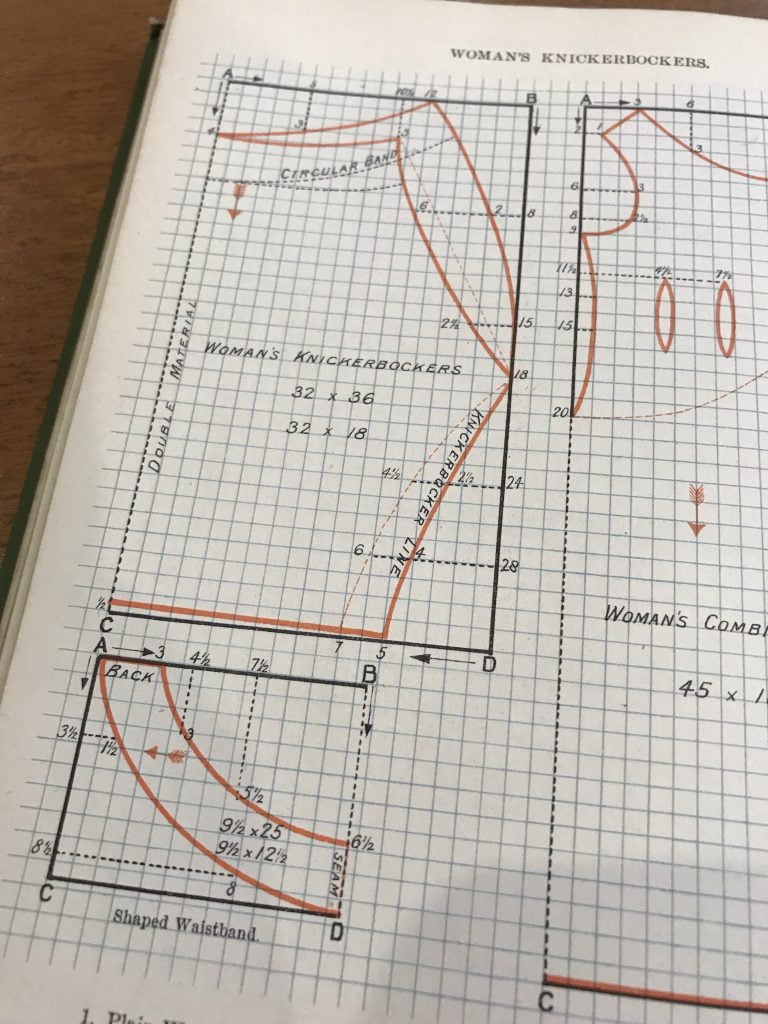
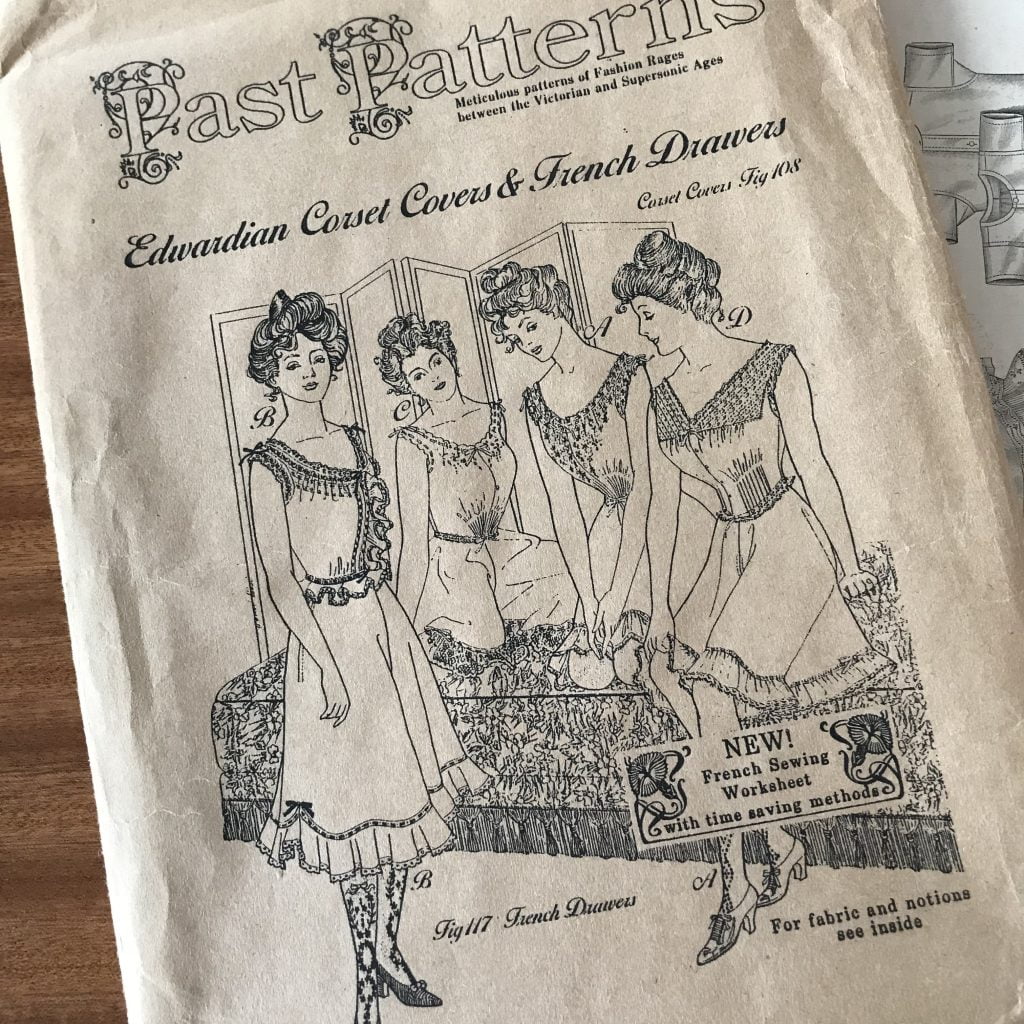
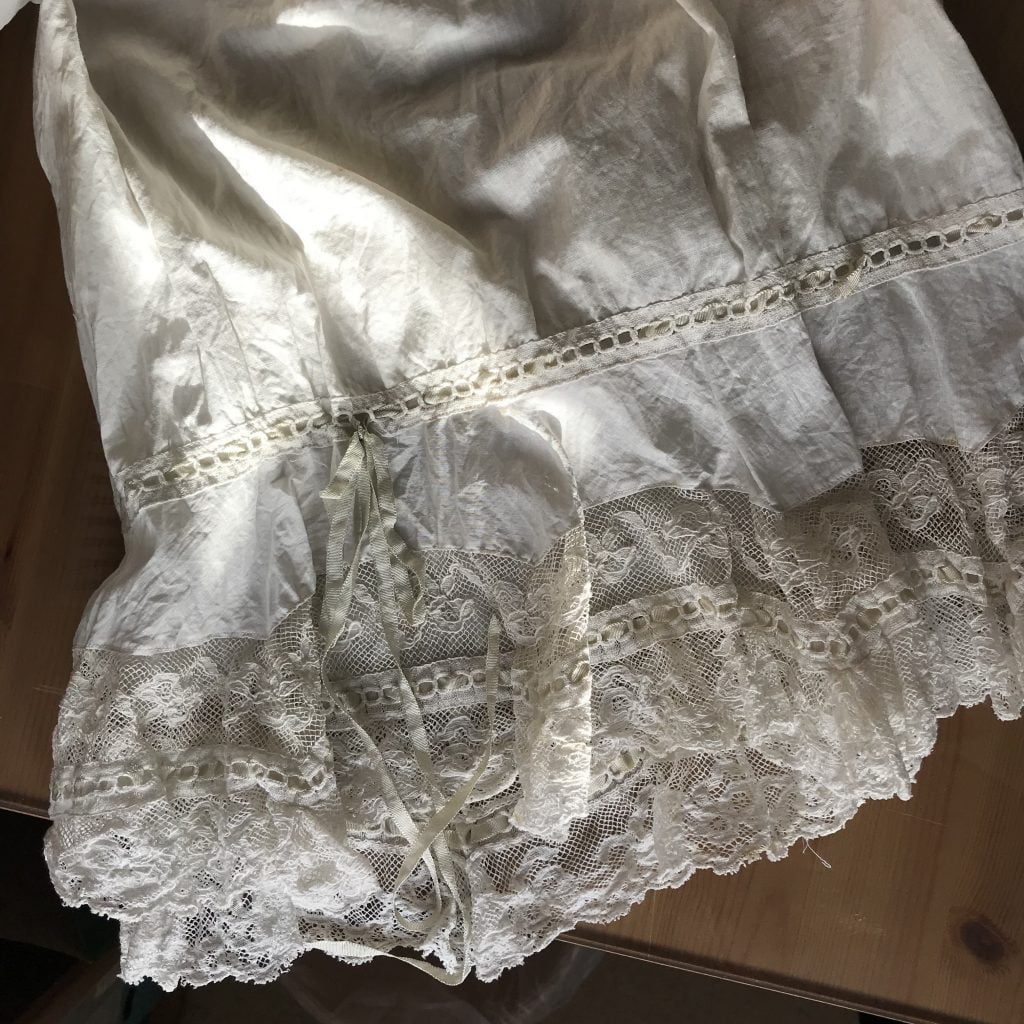
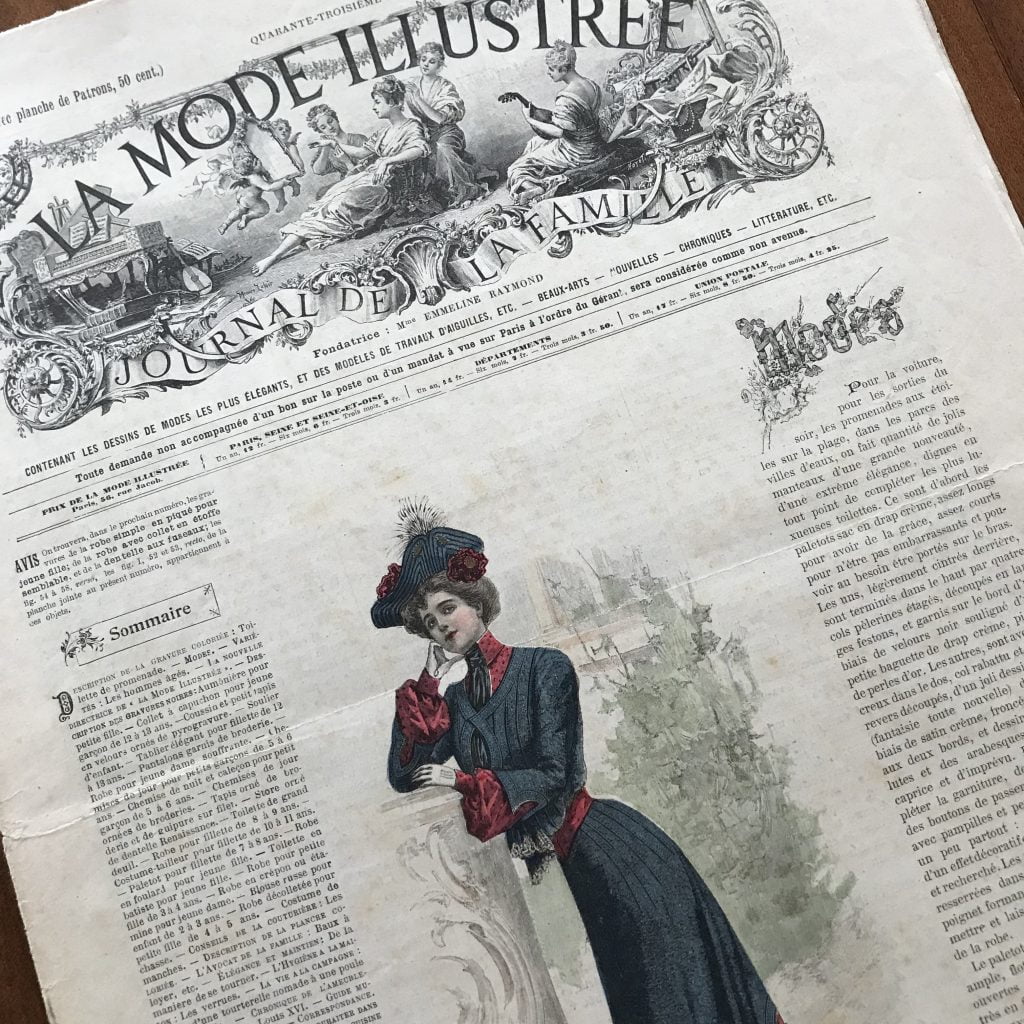
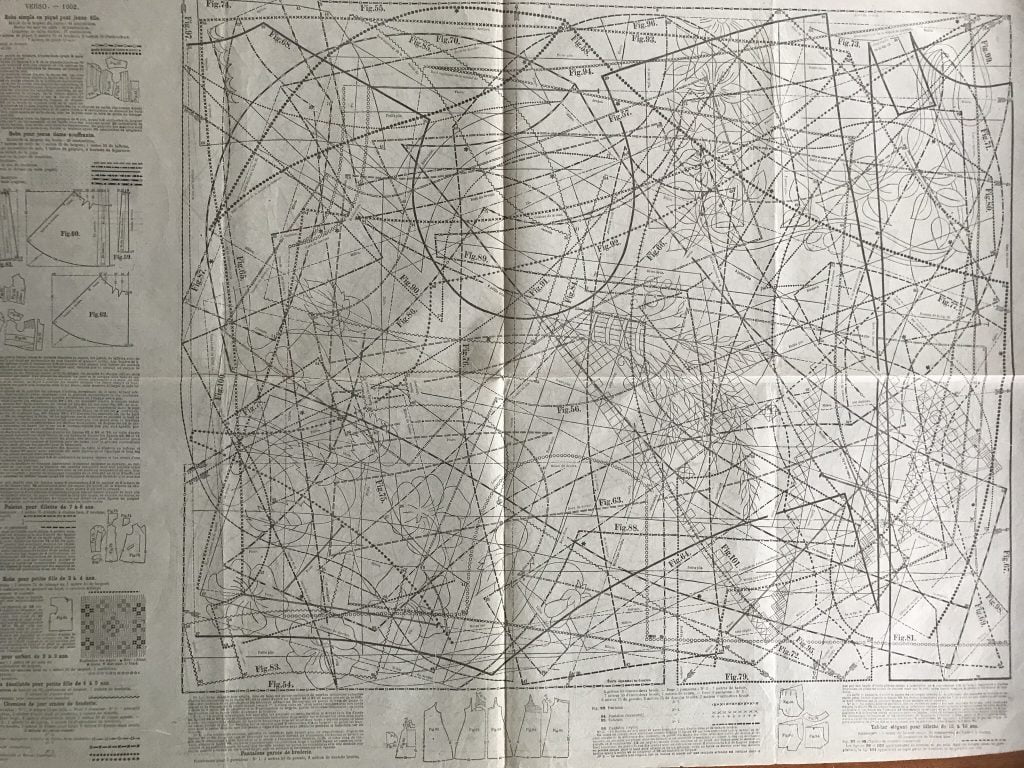

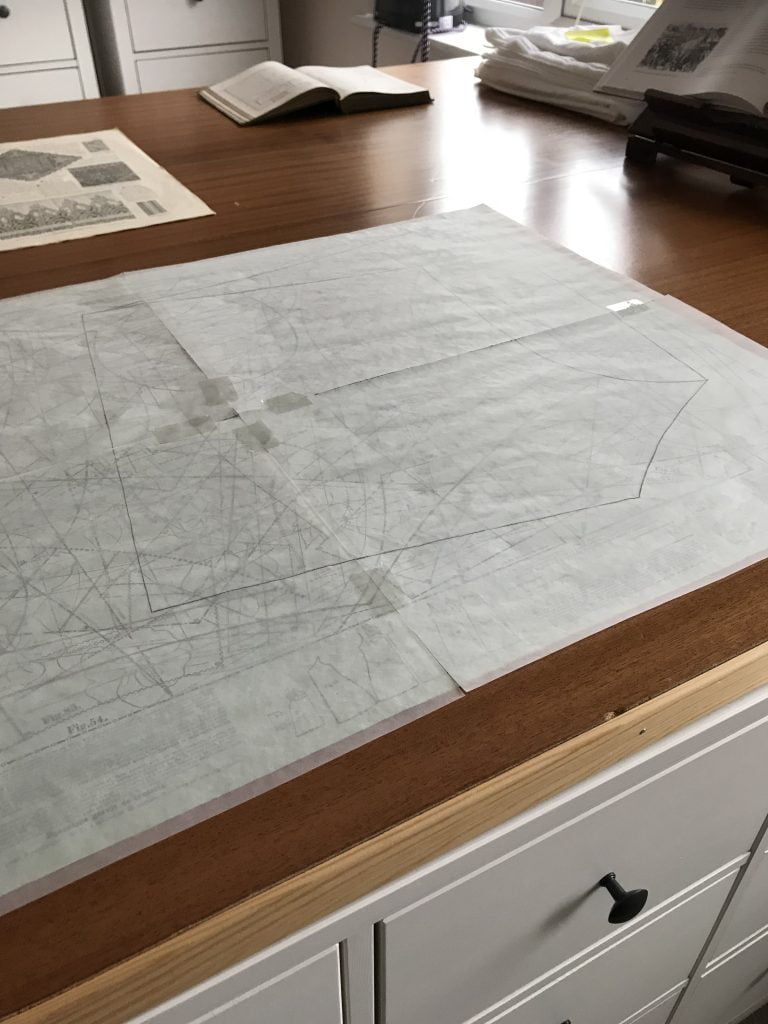
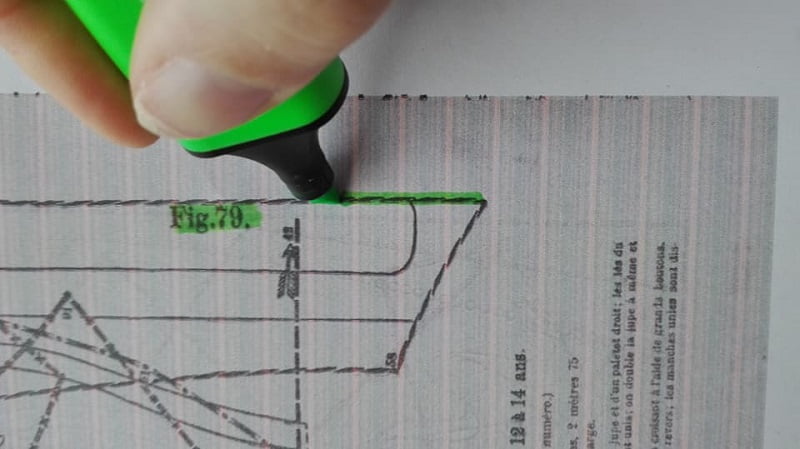
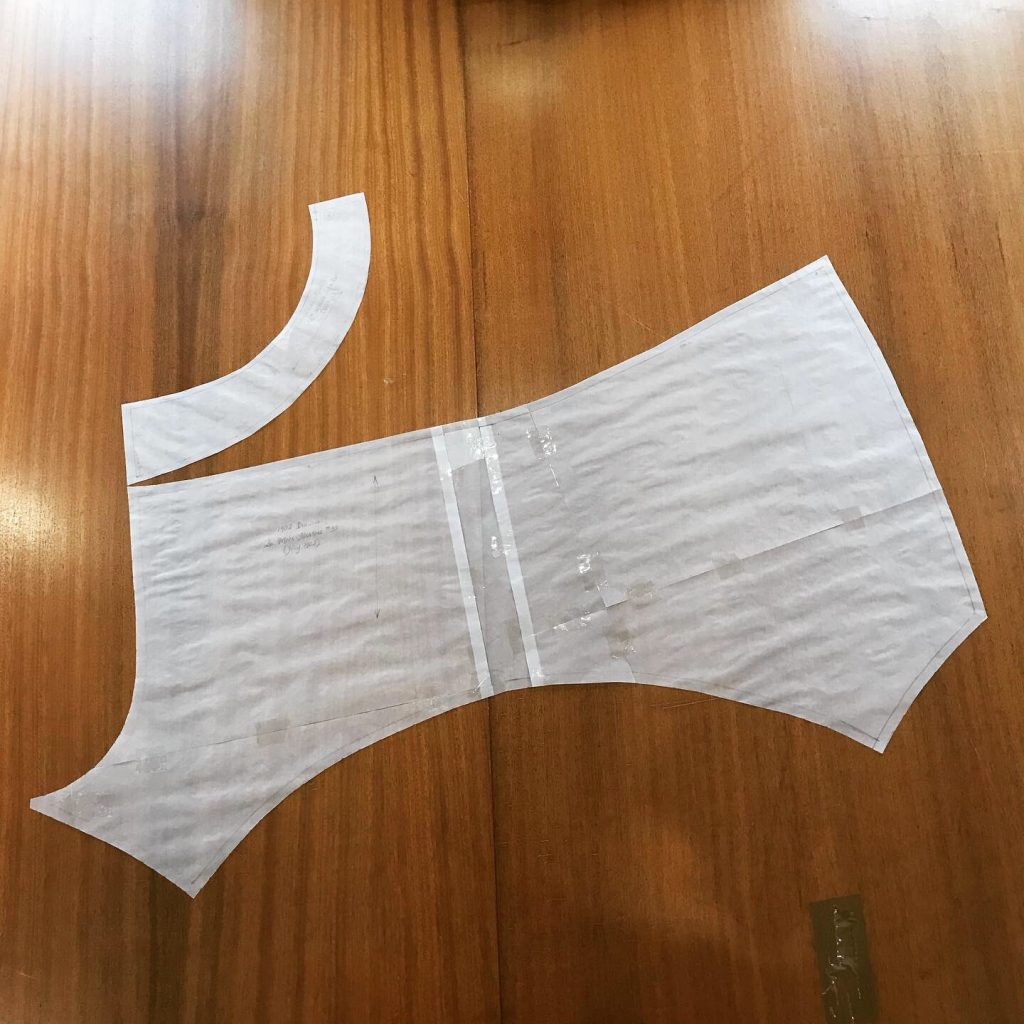
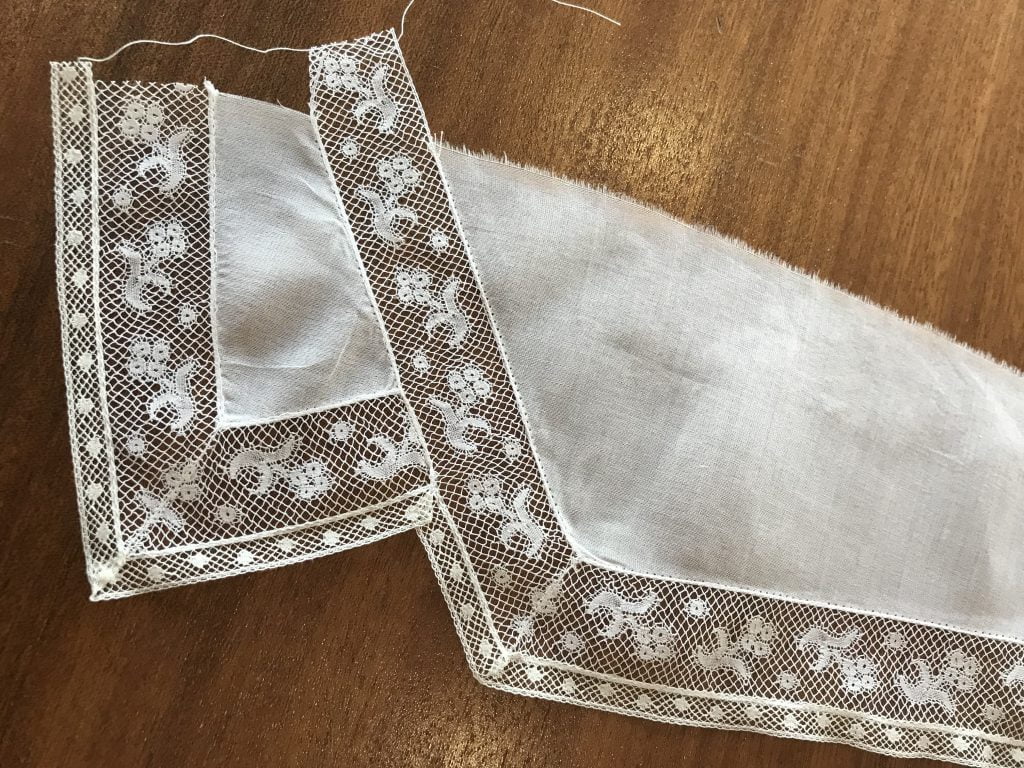
Oh my Cathy, I admire your satisfying pedantry. These drawers are going to be sumptuous
Oh my, Cathy … gorgeous work. Pedantry can be so satisfying, can’t it? Your drawers will be sumptuous.
Bonjour et meilleurs vœux pour 2019. Je t’invite à découvrir ma collection de patrons de mode de 1861 à 1923 , 600 planches de patrons et pour l’instant seuls la moitié des patrons sont disponibles sur le site. Ce travail de conservation est très long. Bien cordialement . Marie-Pascale . http://www.french-crea-vintage.com/fr/
Cant wait to see the finished result! I have an 1870s Mode Illustree that I have traced a pair of split drawers from. I havent finished making them yet, but it was pretty easy 🙂
I have many of these patterns in digital format and have wondered what their actual paper dimensions are. Would you happen to know if all the La Mode Illustree pattern sheets were the same size?
I watched the video with you and Bernadette Banner and I just had to make a pair of the these delights for myself. The two of you were a delight as well.